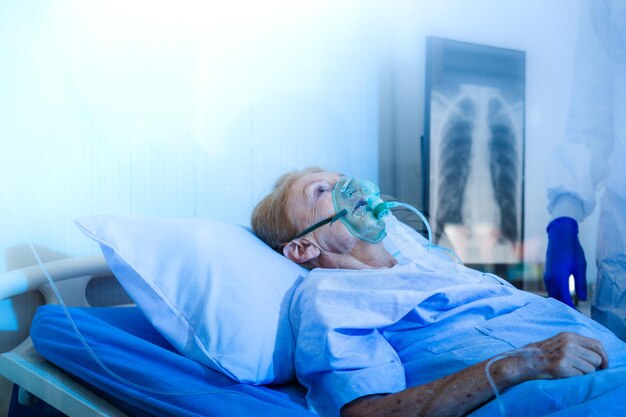Understanding Double Pneumonia: What You Need to Know
Imagine waking up one morning and finding it hard to inhale a deep breath, feeling extreme fatigue, and experiencing chest pain that refuses to subside. These troubling symptoms could potentially indicate a serious condition known as double pneumonia. While we often hear about pneumonia affecting one lung, double pneumonia attacks both, often exacerbating the symptoms and recovery process. But what exactly is double pneumonia, and why does it matter to you? Let’s delve into a comprehensive exploration of this condition.
What is Double Pneumonia?
Double pneumonia is essentially a type of bacterial infection that inflames the alveoli in both lungs. Unlike regular pneumonia, which typically impacts a single lung, double pneumonia affects both simultaneously, subjecting the patient to more intense symptoms and potentially more severe complications.
Causes of Double Pneumonia
The primary cause of double pneumonia is a bacterial infection, although viral infections and fungi can also play a role. Common bacteria responsible for pneumonia are Streptococcus pneumoniae and Mycoplasma pneumoniae. Viral agents like the influenza virus can also lead to double pneumonia, particularly when they spread quickly or when the immune system is compromised.
Risk Factors
Certain individuals are more prone to double pneumonia, especially:
- Older adults: As we age, our immune systems weaken, making elders more susceptible to infections.
- Young children: With developing immune systems, children may find it harder to fight off the bacteria causing pneumonia.
- People with chronic conditions: Chronic illnesses like COPD, asthma, heart disease, or diabetes can predispose individuals to respiratory infections.
- Compromised immune systems: Those with conditions such as HIV/AIDS, or undergoing chemotherapy, are more vulnerable to infections.
Symptoms: What to Watch Out For
Since double pneumonia attacks both lungs, its symptoms tend to be more severe and pronounced. Here’s what you might notice:
- Persistent cough with greenish or rust-colored phlegm
- High fever accompanied by chills
- Shortness of breath or difficulty breathing
- Sharp, stabbing chest pain especially upon inhalation
- Fatigue and general body weakness
- Sweating and shaking chills
How is Double Pneumonia Diagnosed?
If you or a loved one exhibit symptoms consistent with pneumonia, it's crucial to seek medical attention promptly. Medical professionals typically diagnose double pneumonia through several methods:
Physical Examination
Doctors often start with a physical examination, listening for any unusual sounds, such as crackles or wheezes, using a stethoscope. These sounds can hint at fluid in the lungs.
Imaging Tests
- Chest X-ray: A chest X-ray can highlight the presence of infection in the lungs, revealing the extent of pneumonia.
- CT Scan: For a more detailed view, a CT scan can provide a clearer picture of lung conditions.
Laboratory Tests
- Blood tests: To determine the infection's severity and identify the causative agent.
- Sputum test: Analyzing the sputum can identify the bacteria type affecting the lungs.
Treatment Options: Navigating Recovery
While it's tantalizing to discuss treatment options, remember that only healthcare professionals can determine the best course of action for each patient. However, understanding potential treatments can help demystify the process.
Medications
- Antibiotics: If bacteria are responsible, antibiotics are the main treatment avenue.
- Antiviral drugs: These are effective if the cause is viral, though typically they’re only effective if administered early.
Hospitalization
Severe cases of double pneumonia might necessitate hospitalization for close monitoring and care. In a hospital setting, patients may receive supplemental oxygen or even mechanical ventilation if breathing becomes significantly compromised.
Prevention: Staying Ahead of the Illness
Double pneumonia can be daunting, but there are ways to reduce your risk:
Vaccinations
Vaccines such as the pneumococcal vaccines and the annual flu shot can protect against relevant bacteria and viruses.
Healthy Habits
- Good hygiene: Regular handwashing can minimize the risk of infection.
- Healthy lifestyle: A balanced diet and regular exercise can bolster your immune system.
- Avoid smoking: Smoking damages lung tissue and increases vulnerability to infections.
Complications: The Road to Recovery
If left untreated or improperly managed, double pneumonia can lead to severe complications, some of which include:
- Pleural effusion: Fluid accumulation around the lungs impeding normal breathing.
- Lung abscess: A pus-filled cavity forming within the lung.
- Respiratory failure: Severe inability of the lungs to function correctly.
Recovery from double pneumonia, particularly when severe, can be prolonged. It's essential to follow healthcare advice closely and take steps to enhance lung health during recovery.
Double Pneumonia and Modern Medicine: Advances and Insights
Today's medical advancements continuously improve the understanding and treatment of double pneumonia. Research is ongoing, and each scientific leap offers better diagnostic techniques, vaccine developments, and treatment modalities. Staying informed about these advancements can empower individuals in managing their health proactively.
Bringing It All Together
Double pneumonia is more than just a compounded infection of the lungs—it’s a serious health challenge requiring prompt, professional medical attention. Armed with the right knowledge and precautions, we can combat this condition more effectively.
For those facing double pneumonia, understanding the symptoms, treatment processes, and preventive measures is crucial. Always seek professional medical advice to receive care tailored to individual health needs.
Key Takeaways 🎯
- Double pneumonia affects both lungs and can lead to severe health issues.
- Common symptoms include severe cough, chest pain, and difficulty breathing.
- Diagnosis involves physical exams, imaging tests, and laboratory analysis.
- Treatment generally includes antibiotics or antivirals, depending on the cause.
- Prevention is crucial; vaccinations and good hygiene are key.
- Stay updated with modern medical advances for the best strategies in prevention and treatment.
By staying informed, you’re not just addressing an immediate health concern—you’re actively participating in your wellness journey. 🩺✨

Related Articles
- a Typical Pneumonia
- Can a Cold Turn Into Pneumonia
- Can a Sinus Infection Turn Into Pneumonia
- Can Amoxicillin Cure Pneumonia
- Can Amoxicillin Treat Pneumonia
- Can Baby Oil Cause Pneumonia
- Can Bronchitis Turn Into Pneumonia
- Can Covid Turn Into Pneumonia
- Can Doxycycline Treat Pneumonia
- Can Flu Turn Into Pneumonia